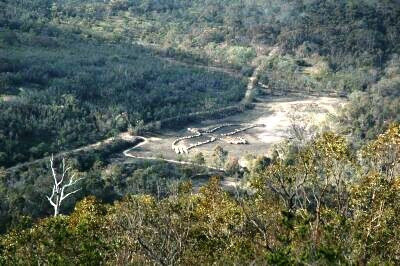Egypt: 'Extraterrestrial Desert Spirals' Mystery Has Been Solved
An Art Project is Behind Circular Patterns Baffling Google Earth Users

Egypt's mysterious desert spiral has finally unearthed its secret.
Since it was first spotted in March 1997, various reasons have been cited for the existance of the phenomenon by, amongst others, baffled Google Earth users.
Some have argued that the 'desert spirals' are portal to a parallel universe, while others mantained they were a landing pad for extraterrestrial spacecraft.
In reality, the spirals were made as part of an environmental art installation called Desert Breath, designed to "measure the passage of time".
Desert Breath is a land art project created by the D.A.S.T Arteam. The group was founded in 1995 by Danae Stratou, Alexantra Stratou and Stella Constantinides.
According to the team, the project was the result of a common desire to work in the desert. A statement on the website reads: "In our mind's eye the desert was a place where one experiences infinity. We were addressing the desert as a state of mind, a landscape of the mind. The point of departure was the conical form, the natural formation of the sand as a material."
The spirals cover an area of 100,000m2, in the eastern Sahara desert bordering the Red Sea in El Gouna.
They were constructed using 8,000m3 of sand, formed into positive and negative conical mounds, which spiral outward around a 30m diameter hole in the middle.
According to D.A.S.T Arteam, Desert Breath is "located between the sea and a body of mountains at the point where the immensity of the sea meets the immensity of the desert". With this in mind, the art functions on two levels, they say, as a visual image from above and a pathway at ground level.

It has been described as measuring the "passage of time" through its slow disintegration, as the sand steadily blows away.
The phenomenon of land art and aerial imagery has previously confused Google Earth users. A large pentagram located on the steppes of Kazakhstan was the source of controversy until it was revealed to be the outline of roads in a Soviet car park. The star was a symbol of the USSR, of which the country was a part of until the dissolution in 1991.
Andrew Roger is a sculptor and contemporary artist whose work can be found in plazas and buildings across the world. Roger is the creator of the largest contemporary land art project in the world, called Rhythms of Life. It began in 1998 and currently comprises 49 stone structures across 13 countries.
The Bunjil geoglyph, made of stone structures, can be seen above You Yangs in Lara, Australia. The creature depicted in stone has a wing span of 100m and approximately 1500 tons of rock was used to create it.
© Copyright IBTimes 2025. All rights reserved.






















